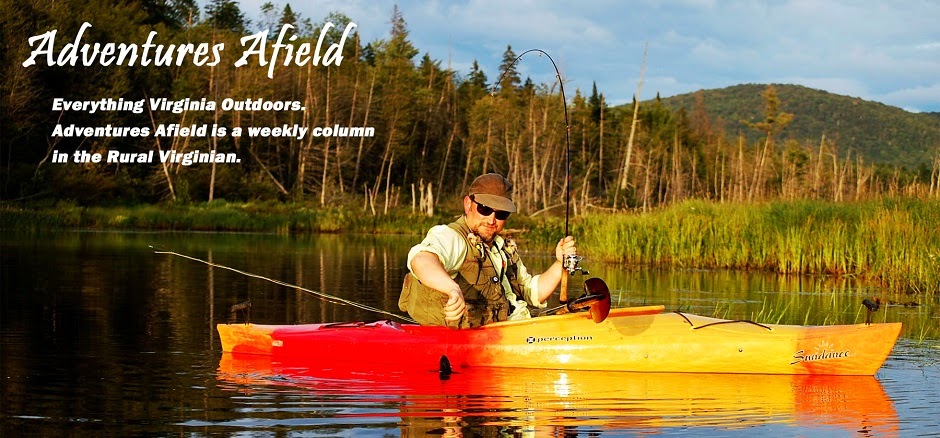A new chapter of my life’s
story began on the year’s second weekend as I rolled south down I-81, towards
Emory, Virginia—my new hometown for the four years to come.
 |
| Photo by Matt Reilly. |
“Town” is a generous
classification of Emory. Emory &
Henry College, a few quiet residential streets, and a post office comprise its
bulk, a fact that consistently elicits a grumble from a proportion of
students—“There is nothing to do
here.”
On the contrary, I’d be
lying if I claimed that E&H’s location carried no weight in my college
choice. Southwest Virginia’s “Mountain
Empire” is a mecca for outdoor recreation.
The school’s stellar reputation only justified my decision, assuring me
of the wonderful experience it would offer.
I spent my previous
semester acquainting myself with the East Coast, not in the common sense
detailed in rest stop brochures, but by experiencing natural communities and
interpreting them with pen, camera, tent, and rod. The move to Emory was an extension of that
pursuit, with added promise of formal education.
It was a challenging
transition—pivoting from a lifestyle that allowed me to be outdoors all day and
every day to one that required schoolwork.
However I realized
shortly when my free time would be and where I would use it. A tip from Bruce Wankel, owner of the
Virginia Creeper Fly Shop, sent me into the mountains with confidence. The concept of starting anew accumulating
knowledge of local waters excited me, and I steadily began picking apart a
small, special-regulations, spring-fed headwater stream.
My first trip began at
mid-morning on a cold January weekday.
The sun beamed through the trees and onto the water coursing through the
hollow, inspiring marginal insect activity.
My first fish came on a weighted nymph—a red-banded, rosy-cheeked,
leopard-spotted wild rainbow trout of about 9 inches.
I began subsequent trips
above the pool that concluded my last; keeping my eyes open; noticing the
presence of insects; adjusting weight, tippet, and flies as needed--all to
solve the puzzle.
The first three trips saw
increasing numbers of fish—15 to 25 to 35.
Local intel informed me that a 14-inch rainbow was a trophy specimen. This was encouraging, having netted several
such fish on my outings.
My fourth trip began
early on a weekday in early February.
The temperature dipped into the teens overnight and remained there, the
sun shielded by clouds. 15 MPH wind
gusts drove the chill deeper.
Under Armour, wool socks,
flannel, outer layer, gloves, beanie—with each layer I pushed temptation to
stay home back, and the icy river regained its allure.
The river snaked through
thick bottomland as I followed it from the road, my mind’s eye recalling the last
pool from the week before. A sharp bend
caught my eye. I pulled over.
As my boots crunched over
frozen leaves, I estimated the amount of river left to fish. Fishing all day would land me at the
uppermost boundary of the special regulation water, and I would have completed
my exploration of the upper river.
The day began slow, maybe
a function of the overnight temperatures.
I summoned all of my patience and diligence, ensuring with painstaking
adjustment that my offering retained contact with the riverbottom at all
times. At last, the first fish of the
day flashed at the end of my leader.
The day offered many small
fish. All but one out of 35 taped under
12-inches upon the hour that declining temperatures and loss of light hinted
that my time was short.
Around the next bend, a
metal sign hung from rusted cable spanning the river—the end of public water—my
destination.
The sign commanded a bend
in the river—a narrow, deep channel sweeping over large chunks of rock. I took my time in plying the bottom, adding
split shot and achieving effective drifts.
A last pool deserves such treatment; and this one, a particularly
elevated reverence, as the last run of my month-long exploit.
The soft glow of the sun
behind winter’s gray mask was sliding behind the hills. Frost chewed at my fingertips and nose,
tempting me to secure my fly and begin the hike back.
One more drift.
An overhand lob of an
awkward double-nymph rig weighted with several split shot landed high in the
shallow head of the run and tumbled slowly along the bottom to the depth of the
bend. Rod horizontal, line tight, I
bounced the flies past a submerged rock.
The line hesitated. I swung for
the sky.
Warmth reclaimed my
extremities. Sweat sprouted from my
forehead. A rolling silver flash
threatened to tear the long rod from my hands.
Moments later, an arm-length fish painted as a rose bush took to the dim
sky, turning the page on the first chapter in the frozen mountains of southwest
Virginia.
*Originally published in the Rural Virginia


